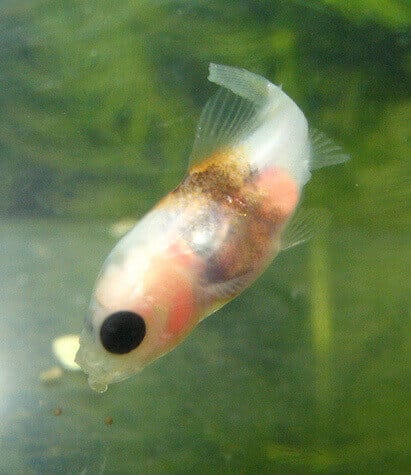
Baby Goldfish Care: A Comprehensive Guide for Healthy and Thriving Fry
Introduction
The arrival of baby goldfish, also known as fry, is a delightful and rewarding experience for aquarium enthusiasts. These tiny creatures require specialized care to ensure their optimal growth and development. This comprehensive guide will provide you with all the essential information you need to successfully raise healthy and thriving baby goldfish.
Hatching and Initial Care
- Hatching: Goldfish eggs typically hatch within 5-7 days after fertilization. The fry emerge as tiny, transparent creatures with large yolk sacs attached to their bellies.
- Initial Care: After hatching, the fry should be kept in a separate tank or container with clean, well-aerated water. Avoid feeding them for the first 24-48 hours, as they will absorb nutrients from their yolk sacs.
Feeding
- Type of Food: Baby goldfish require a diet rich in protein and essential nutrients. Infusoria, newly hatched brine shrimp, and commercial fry food are suitable options.
- Feeding Frequency: Feed the fry several times a day, offering small amounts of food that they can consume within a few minutes.
- Avoid Overfeeding: Overfeeding can lead to water quality issues and digestive problems. Remove any uneaten food after a few minutes.
Water Quality
- Temperature: Baby goldfish thrive in water temperatures between 75-80°F (24-27°C).
- pH: The ideal pH range for baby goldfish is 7.0-7.5.
- Hardness: Soft to moderately hard water is suitable for baby goldfish.
- Filtration: A gentle filter is essential to maintain water quality and remove waste.
- Water Changes: Perform regular water changes of 10-20% to remove nitrates and other harmful substances.
Tank Setup
- Size: The tank should be large enough to provide ample swimming space for the growing fry. A 10-gallon tank is a suitable size for a small group of baby goldfish.
- Substrate: A fine-grained substrate, such as sand or gravel, is recommended for baby goldfish.
- Plants: Live plants can provide hiding places and enrichment for the fry.
- Decorations: Avoid sharp or jagged decorations that could injure the delicate fry.
Health and Disease
- Common Diseases: Baby goldfish are susceptible to various diseases, including swim bladder disorder, bacterial infections, and parasites.
- Prevention: Maintaining good water quality and providing a healthy diet can help prevent disease.
- Treatment: If disease occurs, consult a veterinarian or experienced aquarist for appropriate treatment options.
Growth and Development
- Growth Rate: Baby goldfish grow rapidly during the first few months of life. They can reach a size of 1-2 inches within the first year.
- Coloration: The coloration of baby goldfish varies depending on the breed. Some varieties develop their full coloration within a few months, while others may take several years.
- Sexual Maturity: Goldfish typically reach sexual maturity within 1-2 years of age.
Common Problems
- Stunted Growth: Stunted growth can occur due to malnutrition, poor water quality, or overcrowding.
- Swim Bladder Disorder: This condition affects the goldfish’s ability to maintain buoyancy.
- Bacterial Infections: Bacterial infections can cause symptoms such as lethargy, loss of appetite, and skin lesions.
- Parasites: Parasites, such as anchor worms and gill flukes, can attach to the goldfish’s body and cause irritation.
Tips for Success
- Patience: Raising baby goldfish requires patience and consistency.
- Observe Regularly: Monitor the fry closely for any signs of distress or disease.
- Maintain Clean Water: Regular water changes and filtration are crucial for the health of the fry.
- Provide Adequate Food: Offer a nutritious diet and avoid overfeeding.
- Avoid Overcrowding: Overcrowding can lead to stress and disease.
- Handle with Care: Baby goldfish are delicate creatures. Handle them gently and avoid touching their gills.
Conclusion
Caring for baby goldfish is a rewarding experience that requires attention to detail and a commitment to providing a healthy environment. By following the guidelines outlined in this comprehensive guide, you can ensure that your baby goldfish thrive and develop into healthy and vibrant adults. Remember, patience, observation, and a love for these fascinating creatures are essential for their well-being.
